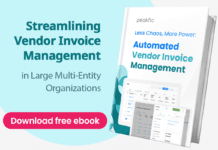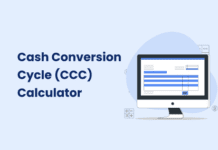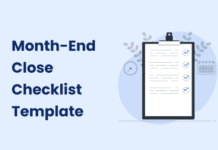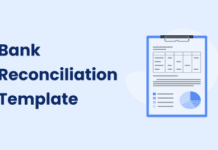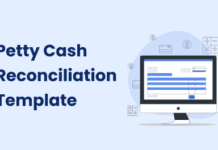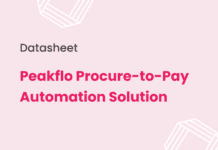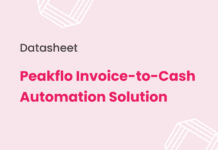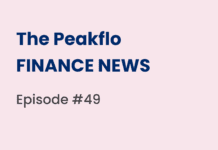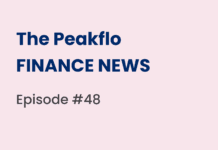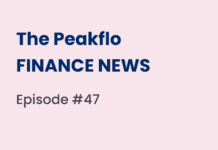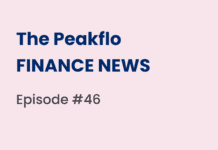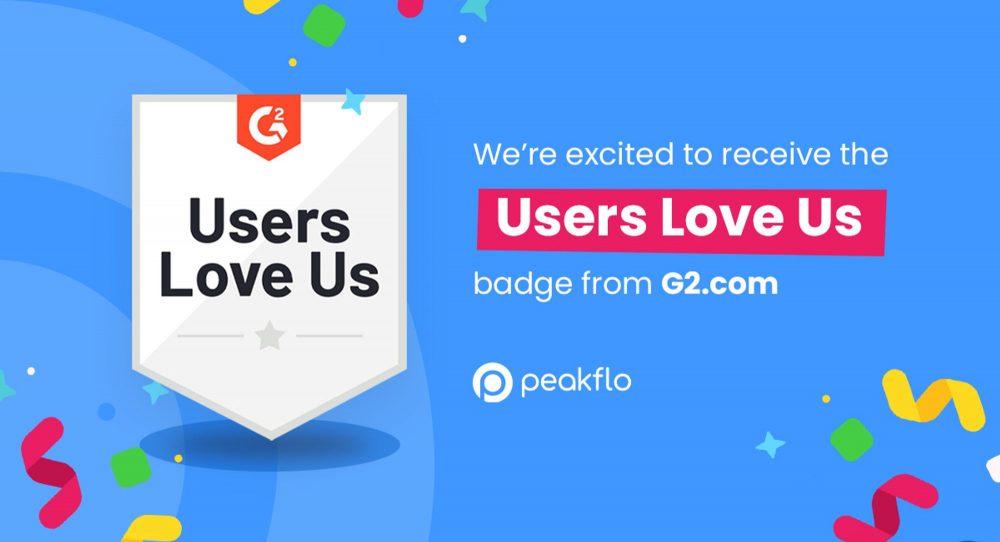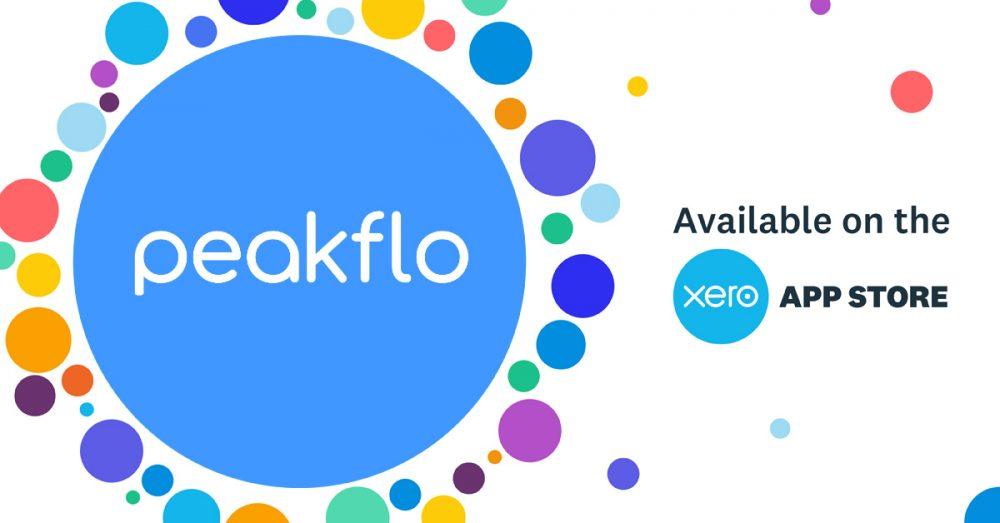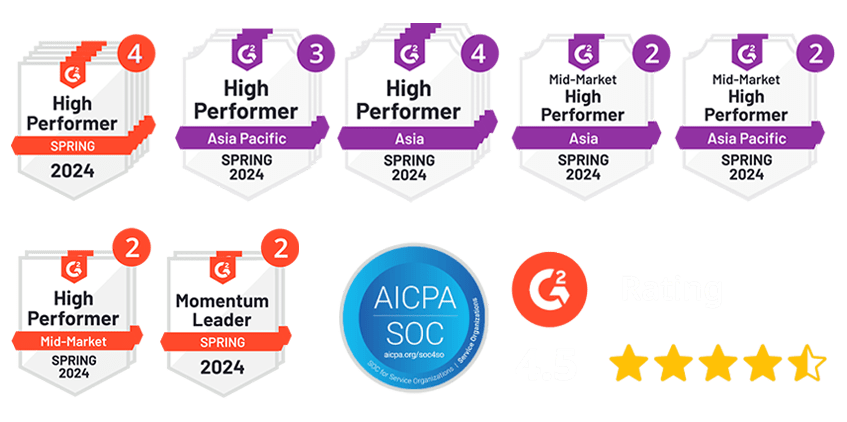Unpaid invoices can strain any business. Large enterprises face even bigger challenges when cash flow gets disrupted. Late payments make it harder to cover costs, pay vendors, or plan for growth.
That’s why many businesses use advance billing. An advance payment invoice secures payment before delivering goods or services. This keeps cash flow steady and reduces the risk of unpaid invoices. However, asking for advance payments can be tricky. Customers may hesitate, and handling these invoices the wrong way can cause disputes.
How do you request advance payments without losing trust? And how do you track and manage them properly? This guide covers everything from how advance billing works to best practices that make it smooth for both businesses and customers.
What is an Advance Billing Invoice?
An advance payment invoice is a bill that a business sends before delivering goods or services. It asks the customer to pay upfront, either partially or in full. This helps companies secure payments early, avoid cash flow issues, and reduce non-payment risks.
For example, a construction company is hired to build a custom office space. Before starting, they request a 50% advance payment to cover materials and labor costs. They issue an advance payment invoice, and once the client pays, the project begins. The remaining amount is due upon completion.
This method ensures that businesses have funds to cover costs while customers get proof of their payments. It also builds trust, as both parties know the terms before work starts.
Collecting payments before delivering a product or service might seem unusual, but for many businesses, it is a necessary step to maintain a steady cash flow and reduce financial risk. To understand why, let’s break down how advance billing works.
How does Advance Billing Work?
Many businesses struggle with late payments, which can disrupt cash flow and slow down operations. Advance billing prevents this by securing partial or full payment upfront before delivering a product or service. This helps businesses cover initial costs, manage finances better, and reduce the risk of non-payment. Below is the breakdown of how advance billing works:
1. Issuing the Invoice Before Starting The Work
Businesses send an advance billing invoice before starting a project or shipping goods. This invoice clearly outlines the amount due, payment terms, and scope of work to ensure transparency.
2. Receiving the Advance Payment
The customer makes an upfront payment through bank transfer, credit card, or other methods. This gives the business immediate access to funds needed for materials, salaries, or other expenses.
3. Delivering the Product or Service
After receiving the payment, the business starts work or ships the product. If the advance payment covers the full cost, no further invoices are needed. If it was a partial payment, a final invoice will follow after completion.
4. Sending the Final Invoice (If Applicable)
If only a portion is billed in advance, the business issues a final invoice for the remaining balance after completing the service or delivering the goods.
Why is Advance Billing Important?
Advance billing is especially useful for businesses with high upfront costs or long-term projects. It prevents cash flow shortages, reduces the risk of unpaid invoices, and allows businesses to plan their finances effectively. Customers also benefit from clear payment expectations, helping them budget for services without unexpected charges later.
This method is commonly used in industries like SaaS, construction, manufacturing, and professional services, where upfront investments are necessary to start work. By securing payments early, businesses can operate with greater financial stability and fewer disruptions.
Advance billing comes in different forms, depending on the industry and payment structure. Businesses can choose the right approach based on their cash flow needs and customer agreements. Let’s understand the types of advance payment invoices and how they work.
Types of Advance Billing Invoices
Choosing the right type of advance billing is crucial for businesses and customers. Without a clear payment structure, businesses risk cash flow issues, while customers may face unexpected costs. Advance payment invoices help prevent delays, reduce financial risks, and ensure both parties have clear expectations. Whether it is a partial deposit or full payment upfront, using the right approach keeps transactions smooth and reduces disputes.
1. Partial Advance Billing Invoice
A partial advance payment invoice is used when a customer pays part of the total amount before receiving a product or service. This helps businesses cover costs like materials, labor, or production. It also gives customers flexibility by allowing them to pay in stages.
Example: A furniture company asks customers to pay 40% upfront before production begins. This ensures they have the funds to buy materials. The rest is paid once the furniture is ready for delivery.
2. Full Advance Billing Invoice
A full advance payment invoice requires customers to pay the entire amount before delivery. This method is often used for custom products, digital services, or large orders. It eliminates payment risks and helps businesses maintain a steady cash flow.
Example: A freelance designer asks for full payment before starting a logo project. Since the service is custom-made and non-refundable, the advance payment ensures commitment from both sides.
3. Recurring Advance Billing Invoice
Recurring advance invoices are used for services that require regular payments. These invoices are common for subscriptions, maintenance plans, and memberships. They help businesses secure steady revenue while offering customers a predictable payment schedule.
Example: A gym charges members at the start of each month. This guarantees the gym receives payment on time while giving members uninterrupted access to facilities.
4. Milestone-Based Advance Billing Invoice
Milestone-based invoices divide payments into stages. Instead of paying everything upfront, customers pay as work progresses. This ensures that businesses receive funding throughout the project while keeping customers involved.
Example: A software company agrees to build a mobile app for a client. The client pays 20% upfront, 40% after the prototype is ready, 30% after testing, and the last 10% after final approval. This method protects both parties and keeps the project on track.
5. Retainer Advance Billing Invoice
A retainer invoice is issued when a business is paid in advance for ongoing services. This is common among consultants, legal firms, and agencies. It ensures businesses have guaranteed income while customers get priority service.
Example: A law firm charges a client a fixed retainer fee each quarter. This guarantees the client access to legal services whenever needed.
The best type of advance billing depends on the business model, customer relationship, and payment terms. Some businesses prefer full payment upfront, while others break payments into smaller parts.
Understanding the different types of advance payment invoices helps businesses choose the right approach for secure and smooth transactions. But how does advance billing benefit both businesses and customers?
Advantages of Advance Billing
Advance billing helps businesses stay financially secure. They provide financial security, improve planning, and strengthen customer relationships. Here’s how they make business operations smoother:
1. Keeps Cash Flow Steady
Every business needs cash to pay for rent, salaries, and supplies. Waiting too long for payments can cause problems. Advance billing ensures businesses receive money upfront, so they don’t have to rely on loans or credit.
2. Lowers the Risk of Non-Payment
Some customers delay payments or don’t pay at all. This creates financial stress, especially for small businesses. Advance payments secure funds before work begins, reducing the risk of unpaid invoices.
3. Makes Budgeting Easier
Knowing when money will come in helps businesses plan their expenses. Advance payment invoices give a clear picture of expected income, making it easier to manage finances and avoid shortfalls.
4. Reduces Last-Minute Cancellations
When businesses start work without payment, they take a risk. Customers may cancel orders after resources have been used. Advance billing confirms the customer’s commitment and prevents wasted time and effort.
5. Prevents Delays in Work or Delivery
Some projects need materials, software, or extra staff. Without advance payments, businesses may struggle to cover these costs. Receiving payment early allows work to start without delays.
6. Creates Clear Agreements
An advance payment invoice outlines costs, deadlines, and terms. This reduces misunderstandings and keeps both businesses and customers on the same page. It also helps build trust and long-term relationships.
While advance billing offers many benefits, it also comes with challenges that businesses need to manage carefully. Understanding these obstacles can help companies set clear policies and avoid potential disputes.
Challenges with Advance Billing
Advance billing helps businesses get paid upfront, but it also comes with challenges. One big issue is the time spent on billing tasks. A QuickBooks survey found that 65% of businesses spend an average of 14 hours per week just collecting payments. This takes time away from running the business and serving customers. Other challenges include customer trust, cash flow management, payment disputes, accounting complexities, and handling refunds. Businesses must plan carefully to avoid these problems.
1. Customers May Hesitate to Pay in Advance
Some customers feel uneasy about paying before receiving their order. They might worry about delays, poor quality, or even fraud. This is common for new buyers who have never worked with a business before.
Companies can ease concerns by offering clear contracts, refund policies, and payment plans.
2. Managing Cash Flow Can Be Tricky
Getting paid in advance helps with cash flow, but it also creates risks. Businesses must be sure they will have enough money when it’s time to deliver the product or service. If they mismanage funds, they may struggle to fulfill orders.
Keeping track of expenses and planning budgets carefully can prevent cash shortages.
3. Payment Disputes Can Arise
If the terms are not clear, customers may misunderstand the payment process. For example, a client might expect a product within a week, but the business planned for a month-long delivery. This can lead to frustration and disputes.
Written agreements that explain payment terms, timelines, and refund policies help avoid confusion.
4. Accounting and Tax Rules Can Be Complicated
Advance payments are not counted as income until the service or product is delivered. Businesses must record these payments correctly to stay compliant with tax laws. Poor bookkeeping can lead to mistakes, penalties, and financial issues.
Using accounting software makes it easier to track payments and avoid errors.
5. Refunds and Cancellations Need a Clear Policy
If a customer cancels an order after making an advance payment, businesses must decide how to handle refunds. Will they return the full amount? Keep a portion for administrative costs? Offer store credit instead?
A well-defined refund policy prevents disputes and keeps customers satisfied.
To overcome these challenges, businesses need a structured approach to advance billing. Setting clear terms, managing cash flow wisely, and maintaining transparency with customers can make the process smoother. Let’s learn some best practices for handling advance billing effectively.
Best Practices for Managing Advance Billing
Handling advance billing the right way prevents confusion and payment delays. Without clear terms and proper tracking, businesses may face late payments and customer disputes. Here’s how to manage advance billing smoothly:
1. Set Clear Payment Terms
Unclear terms cause misunderstandings. Every invoice should list the total amount, payment schedule, refund policy, and late fees. For example, if a software company charges customers yearly in advance, the invoice should state whether refunds are allowed. Clear terms help avoid disputes.
2. Break Down the Charges
Customers want to see exactly what they’re paying for. Each invoice should include a detailed breakdown. If a construction company collects a 30% advance, the invoice should mention whether this covers materials, labor, or admin costs. Transparency builds trust and reduces questions.
3. Automate the Invoicing Process
Tracking advance payments manually takes time and increases errors. Automated invoicing can send reminders, generate invoices, and track payments. For example, a subscription business can use automatic billing to ensure payments are collected on time. Automation saves time and prevents missed payments.
4. Communicate Payment Schedules Clearly
Customers don’t like surprises. Businesses should inform them about deadlines, extra fees, and billing changes in advance. If a marketing agency collects 50% upfront, they should notify clients of any additional costs before work starts. Clear communication prevents disputes.
5. Keep Advance Payments in a Separate Account
Mixing advance payments with daily business funds creates accounting problems. Businesses should keep these funds separate until they deliver the product or service. For example, a manufacturing company accepting prepayments for bulk orders can hold the funds in a separate account. This ensures smooth order fulfillment.
6. Offer Multiple Payment Options
Customers pay faster when they have choices. Businesses should provide credit card payments, bank transfers, and online gateways. A SaaS company offering auto-debit options may see fewer late payments than one relying only on bank transfers. More options mean faster payments.
7. Follow Up on Payments Regularly
Even with advance billing, some customers delay payments. A structured follow-up process keeps payments on track. For example, a consulting firm collecting retainers upfront can send automated reminders before the due date. Regular follow-ups improve cash flow.
Following these best practices makes advance billing easier and more reliable. With clear communication, automation, and structured invoicing, businesses can reduce risks, strengthen customer relationships, and ensure steady cash flow.
Why Peakflo is the Best Solution for Managing Advance Billing?
Handling the advance billing process manually can be frustrating. Businesses deal with late payments, approval delays, and accounting mistakes, which hurt cash flow and waste valuable time. Peakflo automates and simplifies these processes, helping companies get paid faster, avoid errors, and keep customers happy. Here’s how Peakflo makes advance billing easier:
1. Proforma Invoice Validation for Faster Approvals
Advance billing often starts with a proforma invoice, which gives customers a cost estimate before payment. Without a proper system, businesses struggle to track approvals, manage disputes, and secure timely payments. Peakflo allows companies to create and send professional proforma invoices, let customers review and approve them online, and even raise disputes on specific charges. Clients can accept invoices with a single click, cutting down approval delays and making payments smoother.
2. Automated Invoicing to Reduce Errors and Save Time
Creating and managing invoices manually takes time and increases the risk of mistakes, missed approvals, and compliance issues. Peakflo automates invoice creation, ensuring they are accurate and tax-compliant. Finance teams can also approve invoices and add e-signatures before sending them. This speeds up the invoicing process and helps businesses maintain better financial control.
3. Smart Payment Reminders to Avoid Late Payments
Many businesses lose time chasing customers for payments. Late payments affect cash flow and create unnecessary stress. Peakflo automates personalized payment reminders, sending them through email, SMS, or WhatsApp to ensure customers pay on time. It also includes escalation workflows, alerting key decision-makers if a payment is overdue. This reduces manual follow-ups and helps businesses recover payments faster.
4. Self-serve customer Portal for Easy Invoice Tracking and Payments
Customers may delay payments because they can’t track invoices or resolve disputes easily. Peakflo’s customer portal keeps everything in one place. Customers can view, manage, and pay invoices anytime. They can also ask questions and settle disputes quickly, reducing back-and-forth communication. This makes the payment process easier for both businesses and customers.
5. Real-Time Cash Flow Insights for Better Decision-Making
Many businesses struggle with poor visibility into receivables, which leads to cash flow problems. Peakflo provides a real-time dashboard to help companies track invoice payments, monitor overdue accounts, and generate reports instantly. Finance teams can see which customers pay on time and which accounts need follow-ups, making it easier to plan for the future.
6. Automated Cash Application for Faster Reconciliation
Matching payments to invoices manually can cause accounting errors and cash flow mismatches. Peakflo automates this process by identifying incoming payments and applying them to the right invoices. This eliminates manual tracking and ensures financial records stay accurate.
Peakflo removes the stress of manual invoicing and payment tracking. With smart automation, real-time insights, and an easy payment experience, businesses can get paid faster, reduce errors, and improve cash flow.
Conclusion
Handling advance payment invoices manually takes too much time. Businesses face delays, late payments, and constant follow-ups. This slows down cash flow and adds stress. Without a proper system, tracking invoices and resolving disputes becomes a huge hassle.
Peakflo makes this process simple. It automates invoice creation, approvals, and payment reminders, helping businesses get paid on time with less effort. The customer portal, real-time insights, and easy payment tracking ensure a smooth experience for both businesses and customers.Stop wasting time on manual invoicing. Automate and improve your cash flow! Book a free demo today and see how Peakflo can help!









![Why AI Sales Calls Are Making Good Sales Reps Even Better [2025 Guide] ai sales calls](https://cdn-kmjmp.nitrocdn.com/YvtqmrsiHUxqerlSiZgbfzqqTARWTElr/assets/images/optimized/rev-834053b/blog.peakflo.co/wp-content/uploads/2025/09/65168cf6-3001-4733-8cbc-12d5684cf449-218x150.webp)







